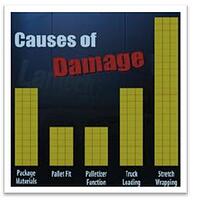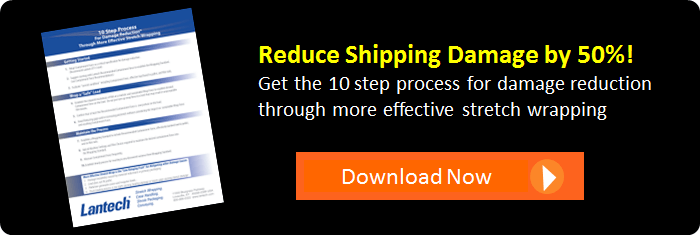1 Chance in 200 Isn’t a Good Bet
Imagine you’re on a Boeing 767 with 199 fellow passengers. As the plane taxis to the destination gate, the purser turns on the intercom and says, “Please remain seated until we unload our in-flight casualty.” Then the plane docks, the door opens, and a paramedic team rushes in and quickly evacuates the injured passenger.
If this scenario actually happened on the average airline flight, how successful do you think these flights would be from a passenger point of view?
Do the math and you could say pretty successful. After all, 99.5% of the passengers arrive intact and undamaged. Only .5% have a problem – which equates to a load damage rate of only .5%. Not too shabby. But would it be fair to say a better scenario would be for all passengers to arrive intact and undamaged on all flights?
When we’re accustomed to a load damage rate close to 0% – which is what the airlines actually deliver – .5% is a lot. It means that on the average, 1 passenger in 200 would be hurt or damaged on every flight. Most of us would probably agree that this is an unacceptable level of risk.
Shipping Damage Steals .5% of Your Gross Sales!
But what’s unacceptable for one transportation mode could be the norm for another. The Grocery Manufacturers Association and the Food Marketing Institute tell us, for instance, that shipping damage (damage that happens between the factory and the point of sale) for the food, beverage, and consumer products industries averages about .5% of gross sales.
The bad news is this amounts to about a billion dollars a year of damage losses in the U.S. alone. The good news is that much of this damage can be avoided.
Standard Practices Reduce Shipping Damage
By making us put our tray tables and seat backs in the upright position for take offs and landings, keeping our seat belts fastened when we’re seated, and our limiting our movement about the cabin while in flight, the airlines have all but eliminated their “shipping damage.”
Shipping pallets of products poses a different set of damage problems. But like injuries to airplane passengers, they’re problems that can be avoided by using standard processes.
Here are the major causes of shipping damage to pallet loads:
- Creating package instability by reducing materials in primary packages.
- Building loads that don’t fit their pallets.
- Using palletizers that build loose or irregular loads.
- Impact damage from loading trucks too tightly or from leaving gaps between loads that cause transit damage.
- Universally poor stretch wrapping.
Better Stretch Wrapping is the Best Way to Start Reducing Damage
Of these causes of damage, stretch wrapping is the easiest, fastest, and least expensive to improve. And if that’s not enough, more effective stretch wrapping is also the “low hanging fruit” or the “band aid” for mitigating or compensating for the other major causes of damage.
If you’re shipping stretch wrapped pallets, unless you evidence to the contrary, you’re not doing better than a 99.5% success rate. And even if you’re hitting 99.5%, it’s not good enough. You’re averaging $50 to $500 damage per truckload and leaving money on the table.
Or put another way, a $100 million company loses $500,000 a year in avoidable shipping damage. How many more widgets does it have to sell to make up that loss?
Reduce Your Shipping Damage by 50%
Stop wasting money. There’s low hanging fruit to be picked. One half a percent damage doesn’t have to be your norm. Lean processes and principles typically reduce damage and waste by 50% or more where ever they’re applied.
Get a copy of our 10 Step Process for Damage Reduction Through More Effective Stretch Wrapping and take the first steps toward driving down your shipping damage and begin recovering lost dollars now.
This post was published on November 19, 2012 and updated on September 13, 2017.
November 19, 2012


